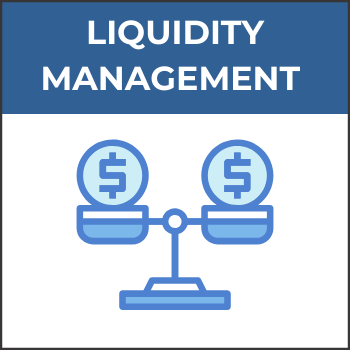By Kathy Gensler, Senior Financial Solutions Consultant
Effective liquidity and interest rate risk management is a key component of a credit union’s safety and soundness. With the COVID-19 pandemic, credit unions are confronted with challenging new uncertainties surrounding loan origination, loan performance, deposit behaviors and interest rates.
Although the long-term economic implications are still ambiguous, the impact on household income is already evident. Nearly one in five households has experienced a layoff or reduction in work hours. The current pandemic crisis will continue to generate contrasting scenarios for the year ahead, requiring a more robust liquidity and interest rate risk management process – one that now accounts for the best but prepares for the worst. Now more than ever, it’s important that credit unions examine their balance sheet from every angle to ensure they’re effectively managing their liquidity needs.
This starts with examining the member behaviors behind each scenario.
Will members be spending, saving or borrowing? If they haven’t already, many will receive their unemployment benefits and stimulus checks in coming days. This raises another important question: how will members budget these funds and allocate which bills get paid? Predicting such member behavior – especially during unprecedented times like this – can be complex. Financial needs vary from household to household, and numerous other factors can influence those decisions.
If you’re a fan of Dave Ramsey’s budgeting principles, you could anticipate that members might start by protecting their “Four Walls” first. This approach states that ‘If you can’t pay all of your bills and are having a hard time making ends meet, these Four Walls should be what you spend your money on first (and in this order) – Food, Utilities, Shelter and Transportation.”
members might start by protecting their “Four Walls” first. This approach states that ‘If you can’t pay all of your bills and are having a hard time making ends meet, these Four Walls should be what you spend your money on first (and in this order) – Food, Utilities, Shelter and Transportation.”
On this premise, credit unions may want to assess where impacted members will get the means to accomplish this. For many, it will not be from their salary. Over the last five weeks, unemployment claims totaled 26 million, marking the highest level of seasonally adjusted initial claims in the history of the reported data. Consequently, this could force some members to draw on their deposits. Others may rely on their credit cards, utilize their home equity or borrow if they qualify.
Financial dependency on credit cards – which was already at an all-time high – is not expected to improve throughout the course of this crisis. On February 13, 2020, the Wall Street Journal reported that total credit card debt had reached the highest level ever: $930 billion. Now, only one month later, some experts believe the U.S. could potentially exceed this figure, and quickly.
Investment banking firm Keefe Bruyette & Woods recently presented a scenario in which consumers stop paying their credit card bills first and eventually stop payments on their car loans. Then – when tapped out – they forgo rent or mortgage payments. Ultimately, they suggested that “surging unemployment and soaring delinquencies will take a massive toll on credit card lenders.”
Stress testing and balance sheet modeling can also help credit unions manage liquidity during these challenging times.
A liquidity stress test and forecast analysis can identify liquidity shortfalls across various stress scenarios. The analysis projects net cash flows based upon multiple factors, such as growth, unfunded commitments, deposit runoff, and changes in interest rates. This dynamic projection can help credit unions develop an informed liquidity strategy.
Balance sheet modeling services can provide insights on a credit union’s liquidity position. Using current balance sheet composition and layering expectations enables credit unions to gauge the impact of different scenarios.
Liquidity management in today’s complex environment can be challenging. However, prudent planning and analyses with the proper partner, such as Catalyst Strategic Solutions' ALM and Advisory Services, can better prepare your credit union for that challenge.